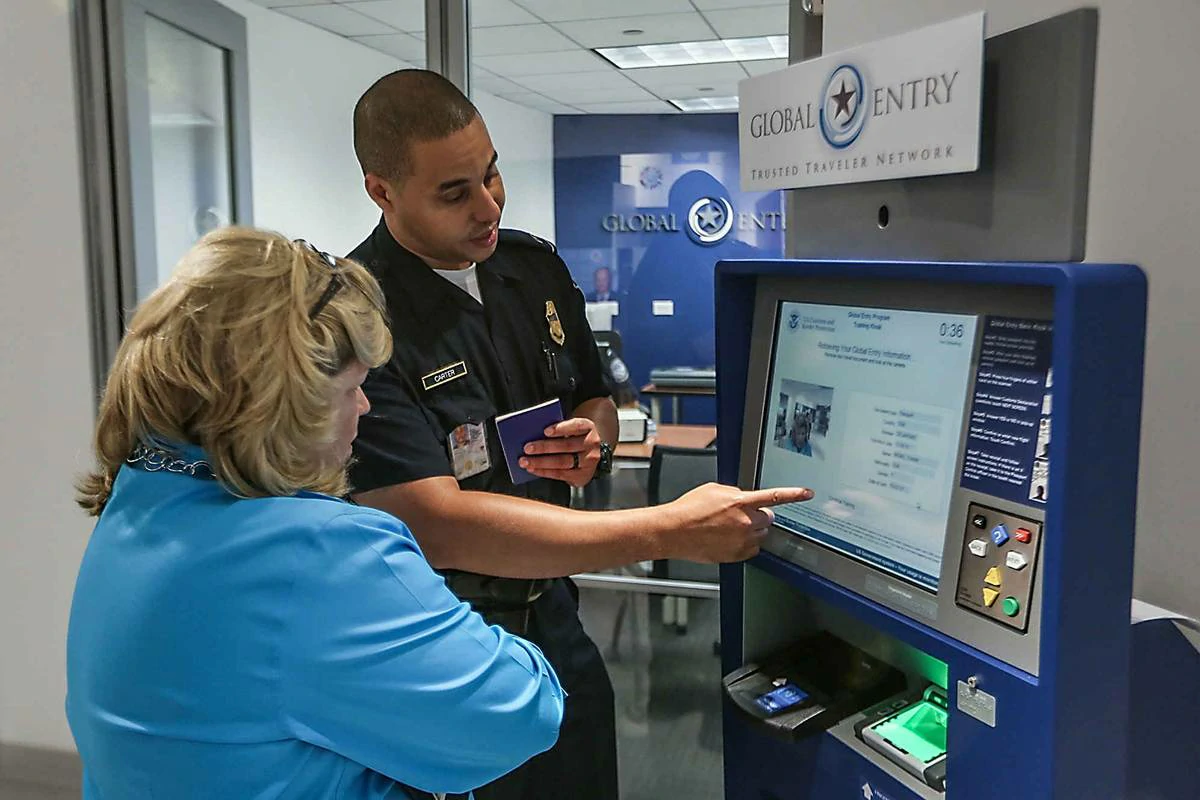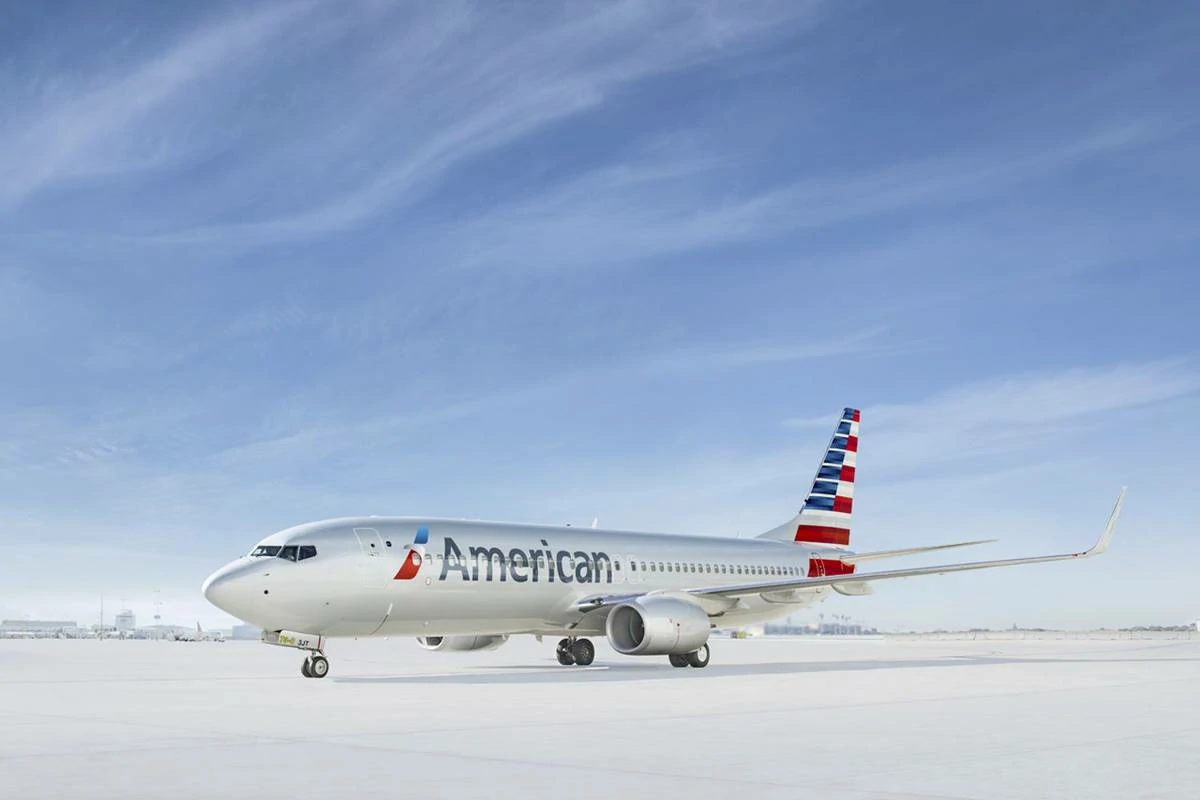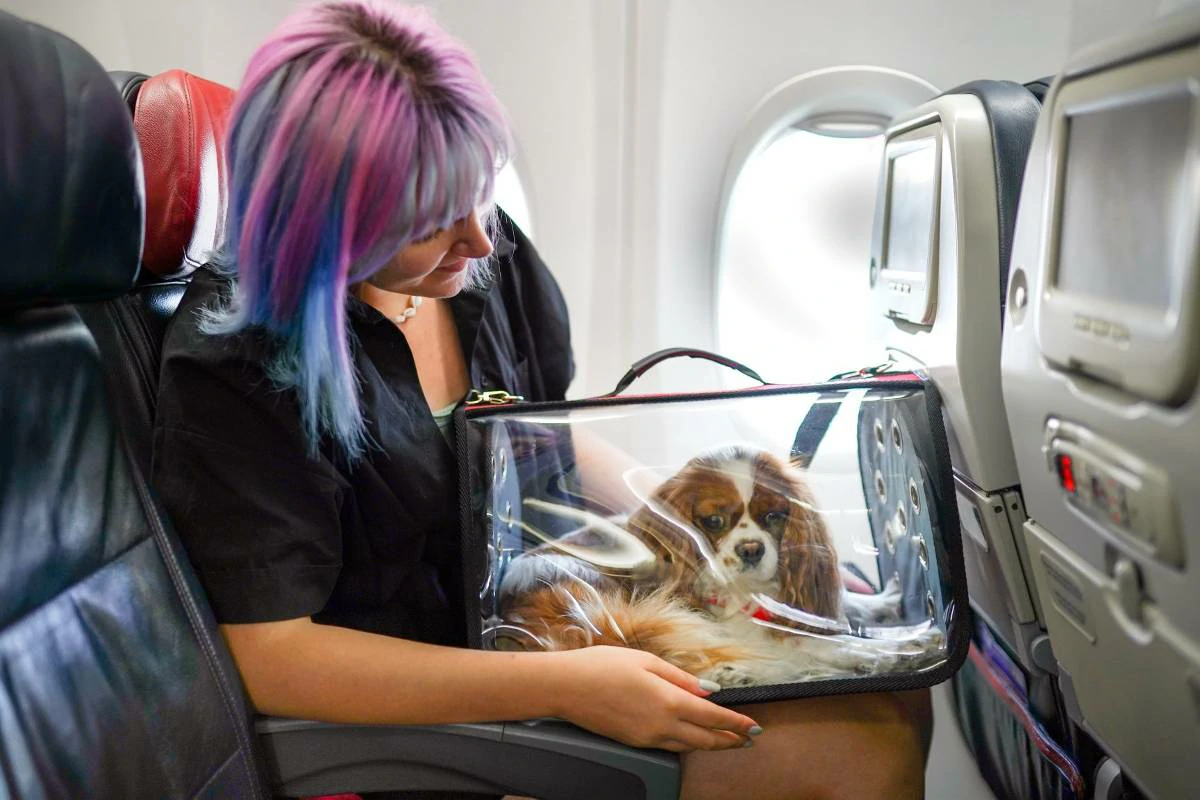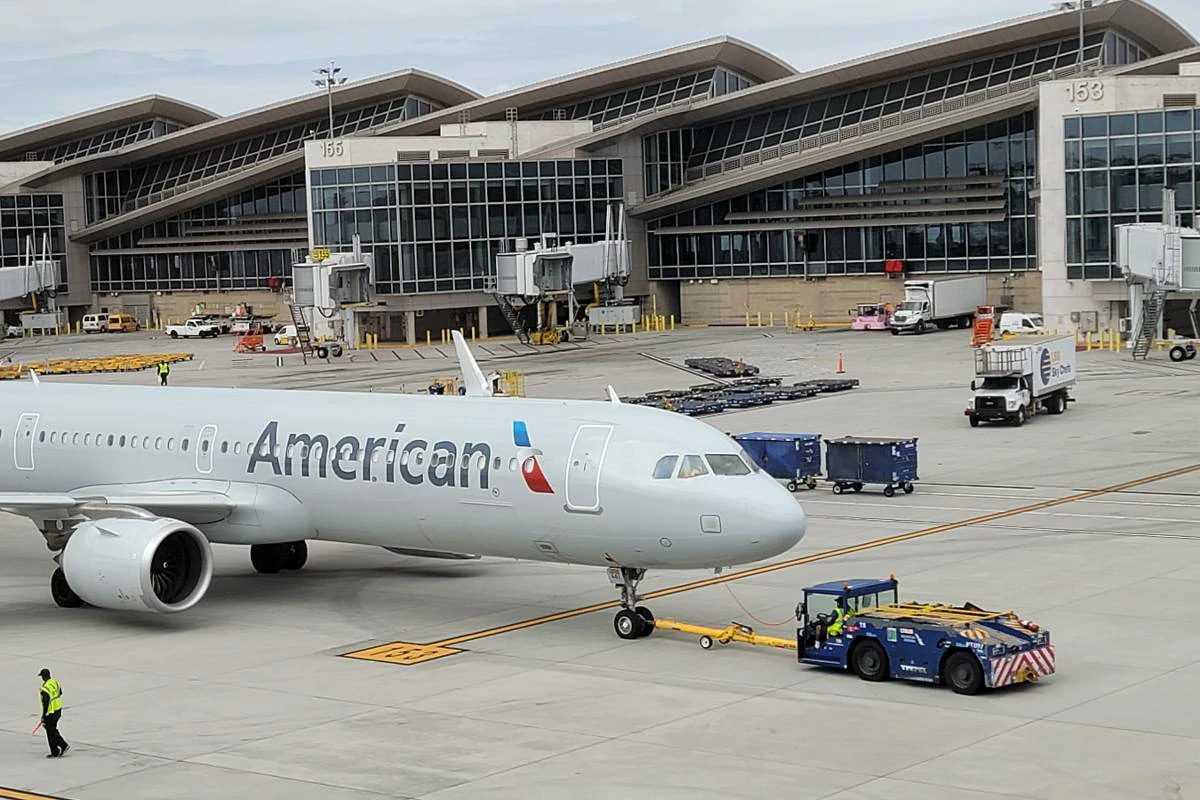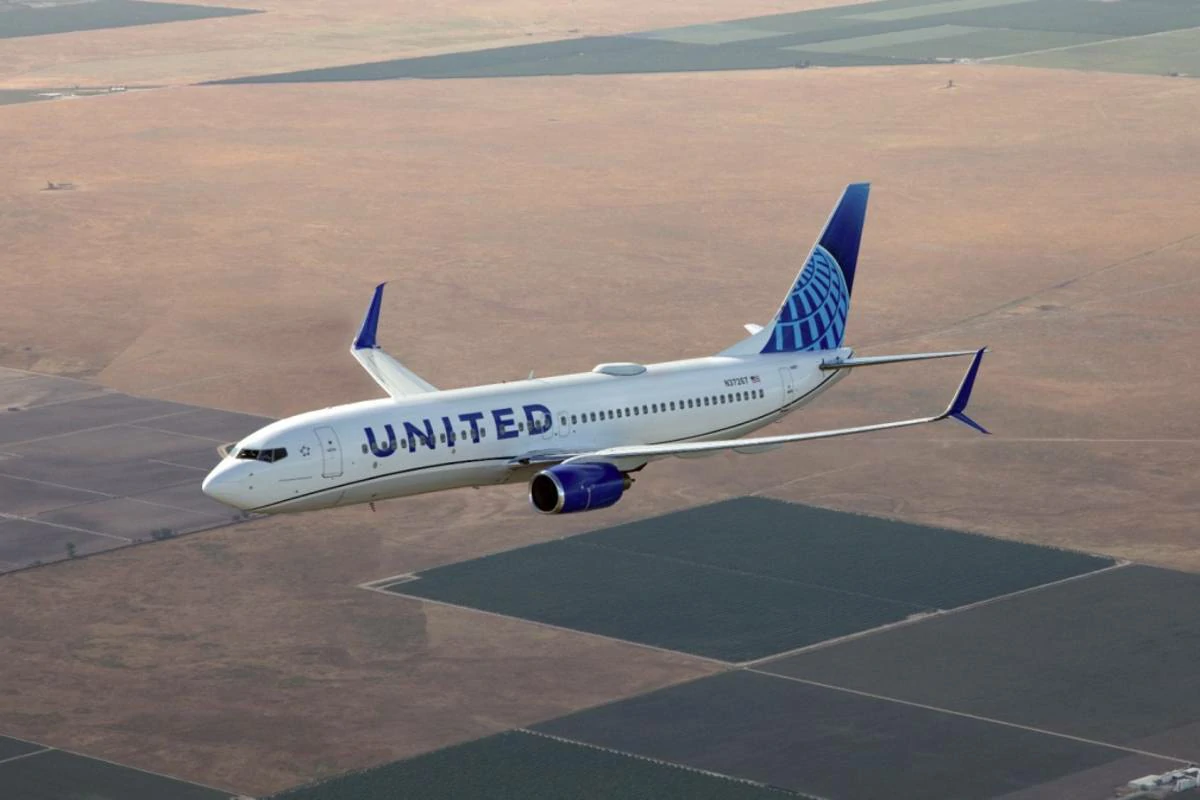TSA PreCheck vs. Global Entry: Which Is Better? Answer is – Both TSA PreCheck and Global Entry are programs designed to expedite your airport security experience. TSA PreCheck focuses on domestic travel within the U.S., offering quicker security lines and less hassle. Global Entry, on the other hand, includes TSA PreCheck benefits but also provides expedited customs clearance when returning to the U.S. from international trips. If you primarily travel within the U.S., TSA PreCheck might be sufficient. However, if you’re a frequent international traveler, the added benefits of Global Entry, like faster customs processing, could be well worth the extra cost.
Summary
- TSA PreCheck: Expedited domestic security screening.
- Global Entry: Expedited domestic and international security screening plus expedited customs processing.
- Cost: TSA PreCheck is cheaper than Global Entry.
- Best for: TSA PreCheck is best for domestic travelers, while Global Entry is best for international travelers.
- Free options: Some credit cards and loyalty programs offer reimbursement for application fees.
TSA PreCheck vs. Global Entry
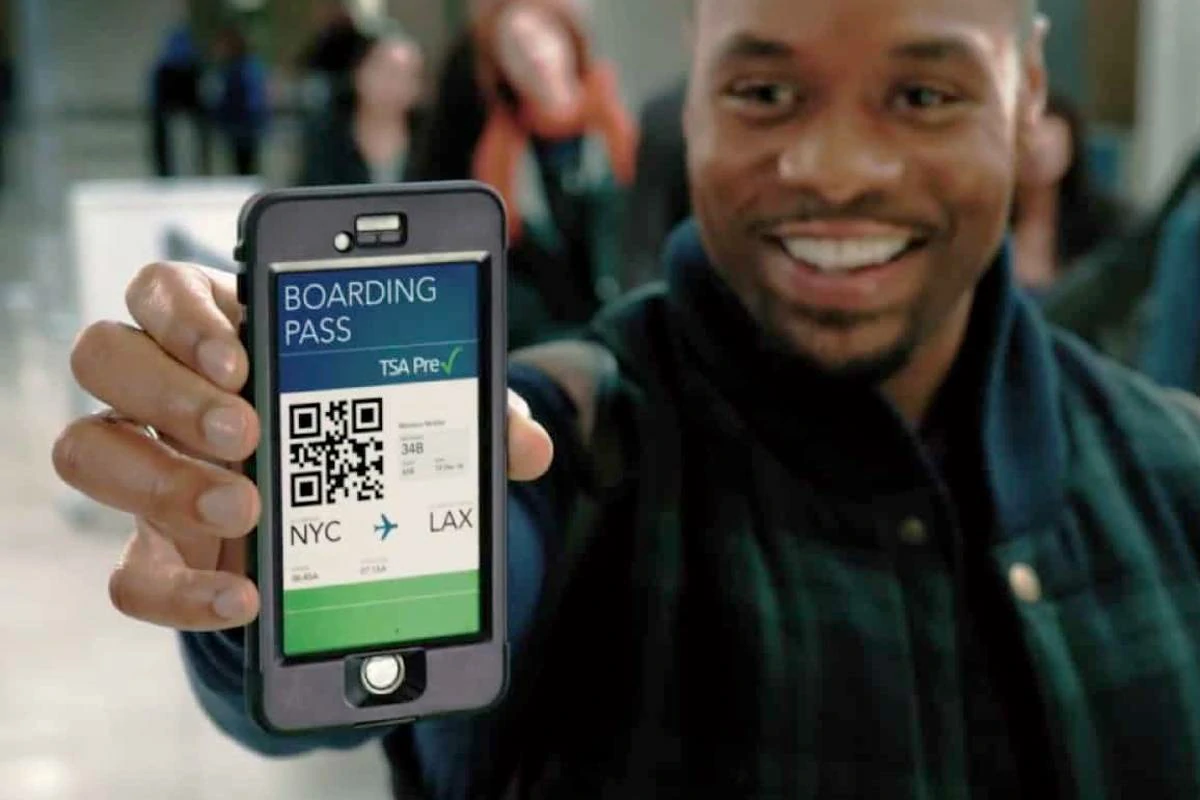
What are TSA PreCheck and Global Entry?
TSA PreCheck and Global Entry are flagship programs under the Department of Homeland Security’s (DHS) Trusted Traveler Programs. These initiatives aim to streamline the airport security and customs experience for low-risk travelers.
TSA PreCheck, primarily focused on domestic travel within the United States, provides expedited screening through dedicated lanes, allowing passengers to keep on their shoes, belts, and light jackets, and leave laptops and 3-1-1 liquids in their carry-on bags.
Global Entry, on the other hand, caters to international travelers, incorporating all TSA PreCheck benefits while adding expedited clearance through U.S. customs upon return from abroad. This is facilitated by automated kiosks that replace traditional customs lines, saving significant time and hassle.
Why Consider Trusted Traveler Programs?
In an era of heightened security measures, Trusted Traveler Programs like TSA PreCheck and Global Entry offer a respite from the often tedious and time-consuming airport procedures.
Time Savings: The most immediate and tangible benefit is the reduced wait time at security and customs. According to the TSA, 93% of TSA PreCheck passengers waited less than 5 minutes in March 2023. This translates to precious minutes, if not hours, saved, particularly during peak travel times.
Convenience: The ability to keep on your shoes, belt, and jacket while passing through security adds a layer of convenience and comfort to the travel experience. For Global Entry members, the automated kiosks eliminate the need to fill out customs declaration forms manually, streamlining the re-entry process.
Stress Reduction: By minimizing wait times and streamlining procedures, these programs contribute to a less stressful travel experience, allowing you to focus on enjoying your journey.
John DiScala Expert Opinion
Travel Industry Expert, John DiScala, founder of JohnnyJet.com, emphasizes the value of Trusted Traveler Programs “For anyone who travels more than a couple of times a year, TSA PreCheck or Global Entry are absolutely worth it. The time and hassle saved are invaluable, especially when dealing with connecting flights or tight schedules.”
TSA PreCheck
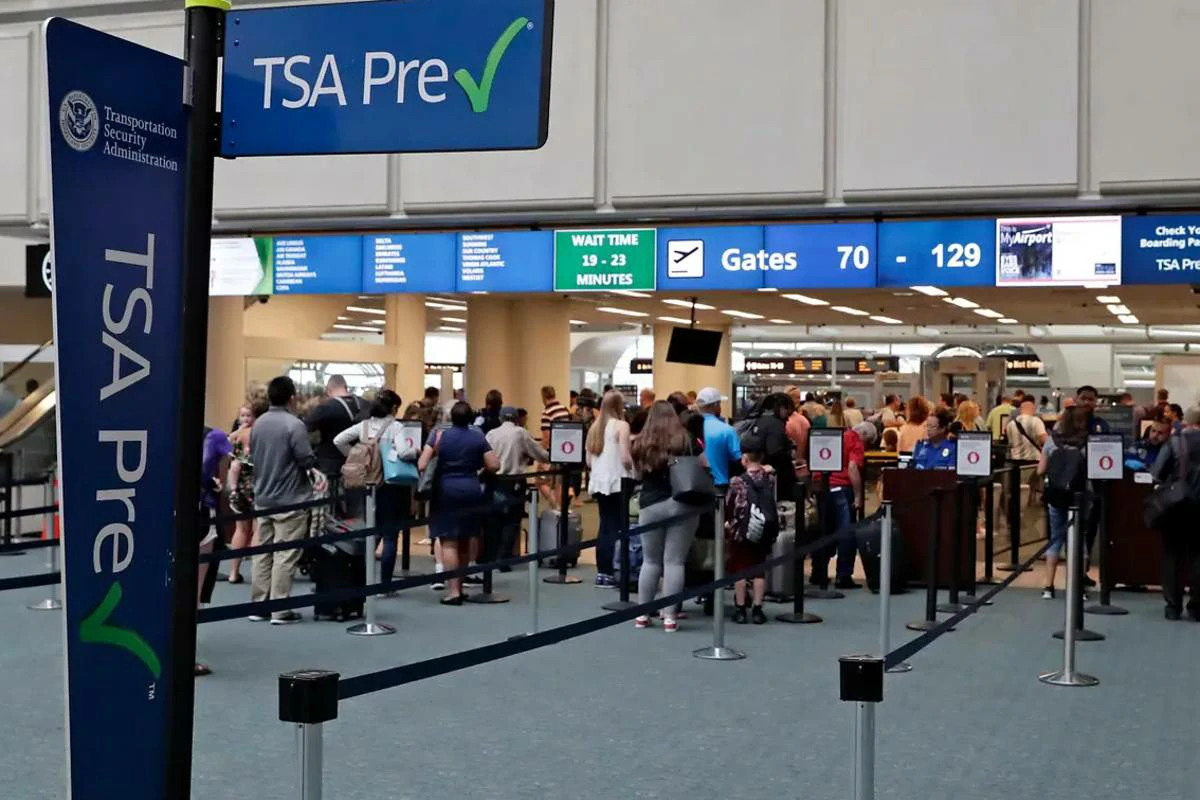
1. How Does TSA PreCheck Work?
TSA PreCheck is designed to streamline the security screening process for approved travelers. It operates as follows:
Application: Individuals apply for TSA PreCheck through the official website. The application involves providing personal information and undergoing a background check.
In-Person Appointment: After a preliminary approval, applicants schedule an in-person appointment at an enrollment center, where they provide fingerprints and identification documents.
Known Traveler Number (KTN): Upon approval, applicants receive a Known Traveler Number (KTN). This unique number is used when booking flights to identify you as a TSA PreCheck member.
Expedited Screening: When you book a flight and provide your KTN, the TSA Pre✓® indicator will be printed on your boarding pass. At the airport, you’ll head to dedicated TSA PreCheck lanes, where you’ll experience a less intrusive screening process.
2. TSA PreCheck Benefits
TSA PreCheck offers several advantages that enhance the travel experience for its members:
Expedited Screening: The most significant benefit is the access to dedicated TSA PreCheck lanes. These lanes are typically shorter and faster than standard security lines, saving you valuable time at the airport.
Less Intrusive Screening: TSA PreCheck members are not required to remove their shoes, belts, or light jackets. They can also leave laptops and 3-1-1 compliant liquids in their carry-on bags. This makes the screening process much quicker and more convenient.
Reduced Wait Times: According to the Transportation Security Administration (TSA), in March 2023, 93% of TSA PreCheck passengers waited less than 5 minutes at security checkpoints. This efficiency translates to more time to relax before your flight or catch a connecting flight with ease.
Stress-Free Travel: The streamlined process and reduced wait times contribute to a less stressful travel experience, allowing you to focus on enjoying your journey.
Bruce Schneier Expert Opinion
Security Expert, Bruce Schneier, a fellow at the Berkman Klein Center for Internet & Society at Harvard University, highlights the impact of TSA PreCheck “TSA PreCheck is a good example of risk-based security. By focusing resources on those who are more likely to be a threat, the TSA can make the system more efficient and effective for everyone.”
3. TSA PreCheck Eligibility Requirements
To be eligible for TSA PreCheck, you must meet certain criteria set by the Transportation Security Administration (TSA):
Citizenship/Immigration Status: U.S. citizens, U.S. nationals, and lawful permanent residents are generally eligible to apply.
Background Check: You must pass a thorough background check, which examines criminal history and other security-related factors.
Disqualifying Offenses: Certain criminal convictions, such as espionage, treason, or terrorism-related offenses, will disqualify you from the program.
Other Factors: The TSA may also consider other factors in their risk assessment, such as immigration status or prior violations of transportation security regulations.
4. TSA PreCheck Application Process
The TSA PreCheck application process involves several steps:
Online Application: Begin by completing an online application through the TSA website. This requires providing personal information, travel history, and consenting to a background check.
In-Person Appointment: After submitting the online application, you’ll schedule an appointment at an enrollment center. During this appointment, you’ll verify your identity, provide fingerprints, and pay the application fee.
Approval and KTN: If your application is approved, you’ll receive a Known Traveler Number (KTN) via email. This KTN is your key to expedited screening and should be included in your airline reservation.
Gary Leff Expert Opinion
Travel Expert, Gary Leff, founder of ViewFromTheWing.com, advises on the TSA PreCheck application process “The key to a smooth application process is preparation. Make sure you have all your documents ready for the in-person appointment and be prepared to answer questions about your travel history.”
5. TSA PreCheck Cost
The cost of TSA PreCheck is:
Standard Fee: $78 for a five-year membership. This fee is non-refundable, even if your application is denied.
Renewal: $70 for a five-year renewal if completed online.
Some credit cards and loyalty programs offer statement credits or reimbursements for TSA PreCheck application fees, which can offset the cost.
Global Entry
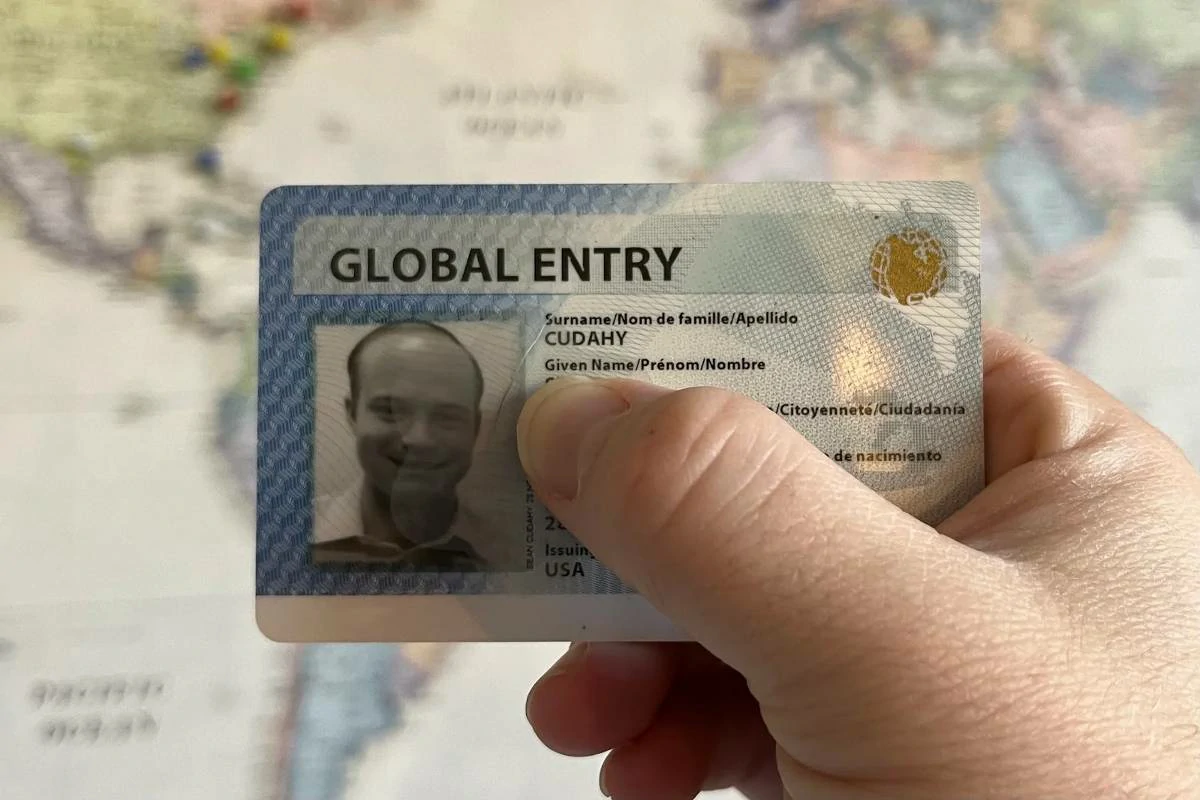
1. How Does Global Entry Work?
Global Entry is a U.S. Customs and Border Protection (CBP) program that expedites the customs clearance process for pre-approved, low-risk travelers upon arrival in the United States. It offers a streamlined entry experience, saving members significant time and effort. Here’s how it works:
Application: Individuals apply for Global Entry through the Trusted Traveler Programs (TTP) website. The application involves providing personal information, travel history, and paying a non-refundable fee.
Conditional Approval: After a thorough background check and risk assessment, applicants who meet the criteria receive conditional approval.
Interview: Applicants schedule an interview at an enrollment center. During the interview, CBP officers verify the information provided in the application, collect fingerprints, and take a photo.
Approval and Membership Card: Upon successful completion of the interview, approved members receive a Global Entry membership card. This card also functions as a valid form of identification for domestic travel.
Kiosk Entry: Upon arrival in the United States, Global Entry members proceed to designated kiosks. They scan their passport or U.S. permanent resident card, provide fingerprints, and complete a customs declaration on the touch screen.
Receipt and Exit: The kiosk issues a transaction receipt, and members proceed to baggage claim and exit the airport.
2. Global Entry Benefits
Global Entry offers a range of benefits that make international travel smoother and more convenient:
Expedited Entry: The most significant advantage is the expedited entry through customs using self-service kiosks. This significantly reduces wait times compared to traditional customs lines.
TSA PreCheck: Global Entry members automatically receive TSA PreCheck benefits, allowing them to enjoy expedited security screening when flying domestically within the U.S.
Reduced Paperwork: The automated kiosk process eliminates the need to fill out paper customs declaration forms, simplifying the entry process.
Faster Processing: The combined benefits of expedited customs and security screening can save members hours of waiting time, especially during peak travel seasons.
Mobile Passport App: Global Entry members can use the Mobile Passport Control app, which further expedites the customs process by allowing you to submit your passport information and customs declaration through your mobile device.
International Partnerships: Global Entry members can enjoy expedited entry benefits in other countries through reciprocal programs like TSA PreCheck, NEXUS, and SENTRI.
Brian Kelly Expert Opinion
Travel Expert, Brian Kelly, founder of The Points Guy, highlights the value of Global Entry: “If you’re an international traveler, Global Entry is an absolute must-have. It’s the gold standard of Trusted Traveler Programs and will save you countless hours in the long run.”
3. Global Entry Eligibility Requirements
Global Entry is designed for low-risk travelers who meet specific criteria established by the U.S. Customs and Border Protection (CBP):
Citizenship/Immigration Status: U.S. citizens, U.S. lawful permanent residents, and citizens of certain countries with which the U.S. has reciprocal agreements are eligible to apply. Currently, these countries include Argentina, Colombia, Germany, India, Mexico, Panama, Singapore, South Korea, Switzerland, Taiwan, and the United Kingdom.
Background Check: You must undergo a thorough background check, which examines criminal history, law enforcement records, and customs violations.
Disqualifying Factors: Certain criminal convictions or pending charges, customs or immigration violations, and other security concerns can disqualify an applicant.
Children: There is no minimum age requirement for Global Entry, but children under 18 must have parental or legal guardian consent.
4. Global Entry Application Process
The Global Entry application process is multi-faceted and requires attention to detail:
Online Application: Start by creating an account on the Trusted Traveler Programs (TTP) website and completing the online application. This includes providing personal information, travel history, and employment details.
Conditional Approval: Upon review, if conditionally approved, you’ll receive notification to schedule an interview at an enrollment center.
Interview: The interview is a crucial step, during which CBP officers verify your information, ask questions about your travel patterns, and collect biometric data (fingerprints and photograph).
Final Approval: If successful, your Global Entry membership will be activated, and you’ll receive a membership card.
The entire process typically takes several months, depending on the volume of applications and interview availability. To expedite the process, consider the Enrollment on Arrival option, where you can complete your interview upon returning from an international trip at select airports.
Summer Hull Expert Opinion
Travel Expert, Summer Hull, founder of Mommy Points, shares her experience with the Global Entry application “The interview was straightforward and took less than 15 minutes. The key is to be prepared, answer truthfully, and have all your documents ready.”
5. Global Entry Cost
The Global Entry application fee is a non-refundable $100, regardless of whether your application is approved or denied. The membership is valid for five years.
While the fee might seem steep compared to TSA PreCheck, remember that Global Entry includes TSA PreCheck benefits, making it a valuable investment for frequent international travelers.
TSA PreCheck vs. Global Entry
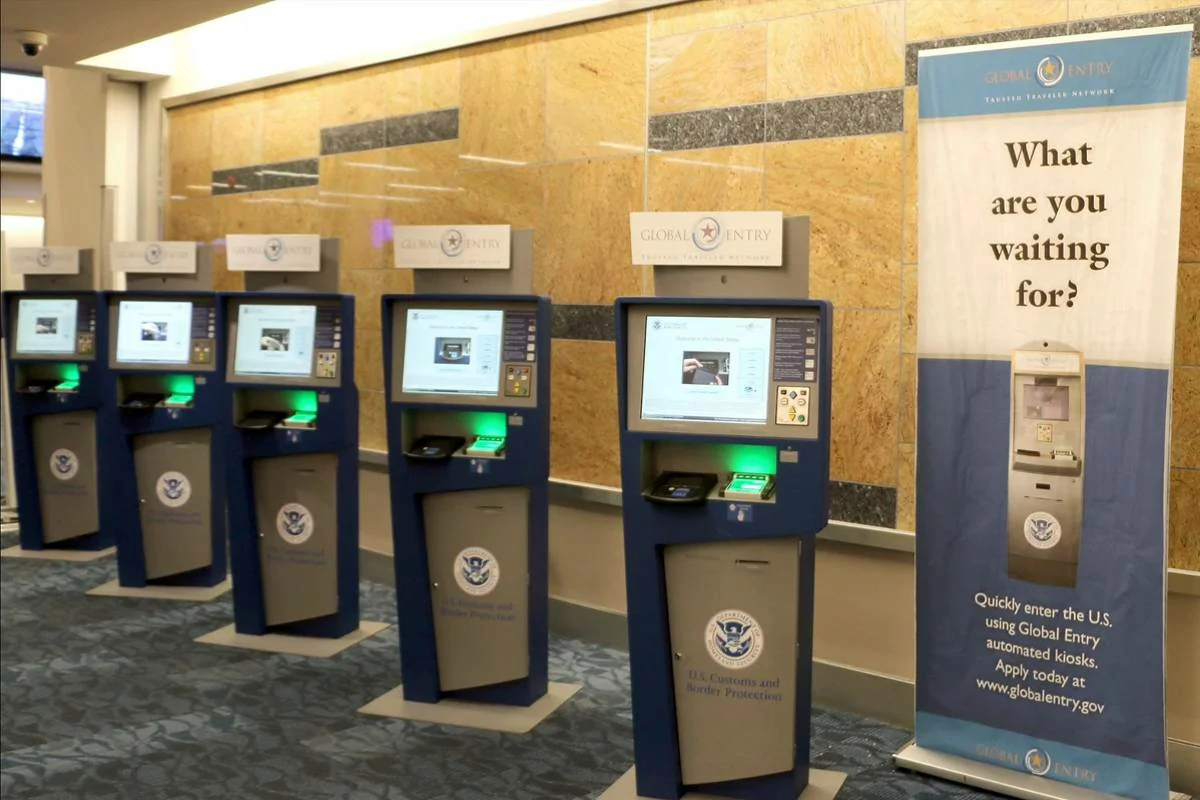
Choosing between TSA PreCheck and Global Entry depends largely on your travel habits and priorities. Let’s break down the key differences to help you make an informed decision.
1. Key Differences Between TSA PreCheck and Global Entry
| Feature | TSA PreCheck | Global Entry |
|---|---|---|
| Focus | Expedited security screening for domestic flights within the United States. | Expedited customs clearance for international arrivals in the United States, plus TSA PreCheck benefits for domestic flights. |
| Benefits | – Dedicated security lines | – Dedicated kiosks for customs clearance |
| – Keep shoes, belts, and light jackets on | – No need to fill out customs declaration forms | |
| – Laptops and liquids can remain in carry-on bags | – TSA PreCheck benefits for domestic flights | |
| Eligibility | U.S. citizens, U.S. nationals, and lawful permanent residents | U.S. citizens, U.S. lawful permanent residents, and citizens of select countries with reciprocal agreements. |
| Application Process | Online application, in-person appointment for background check and fingerprinting. | Online application, conditional approval, in-person interview at an enrollment center. |
| Renewal | Every 5 years | Every 5 years |
2. Cost Comparison
| Program | Cost |
|---|---|
| TSA PreCheck | $78 |
| Global Entry | $100 |
Scott Keyes Expert Opinion
Travel Expert, Scott Keyes, founder of Scott’s Cheap Flights, offers his perspective on the cost-benefit analysis: “If you’re a frequent international traveler, the $22 difference between Global Entry and TSA PreCheck is easily justified by the time and hassle saved at customs. However, if you rarely travel abroad, TSA PreCheck might be the more cost-effective option.”
3. Benefits Comparison
| Benefit | TSA PreCheck | Global Entry |
|---|---|---|
| Expedited Security Screening | ✓ (Domestic flights) | ✓ (Domestic and international flights) |
| Dedicated Lanes | ✓ | ✓ (Customs kiosks) |
| Keep Shoes, Belt, Jacket On | ✓ | ✓ |
| Laptops/Liquids in Carry-On | ✓ | ✓ |
| Expedited Customs Clearance | ❌ | ✓ |
| Mobile Passport Control App | ❌ | ✓ |
| NEXUS Program Benefits (Canada/Mexico) | ❌ | Limited benefits (depends on specific crossing and membership reciprocity) |
| SENTRI Program Benefits (Mexico) | ❌ | Limited benefits (depends on specific crossing and membership reciprocity) |
4. Application Process Comparison
| Step | TSA PreCheck | Global Entry |
|---|---|---|
| Online Application | ✓ | ✓ |
| Background Check | ✓ | ✓ |
| In-Person Appointment | ✓ (Fingerprint and document verification) | ✓ (Interview at an enrollment center) |
| Conditional Approval | ❌ | ✓ |
| Enrollment on Arrival | ❌ | ✓ (Optional for certain airports) |
| Typical Processing Time | A few weeks | Several months (can be expedited with Enrollment on Arrival) |
5. Which Program Is Right for You?
The best program for you depends on your travel patterns and priorities:
TSA PreCheck: Ideal for domestic travelers who want to save time and avoid hassle at security checkpoints.
Global Entry: Best for frequent international travelers who value expedited customs clearance upon returning to the United States and want the added benefits of TSA PreCheck.
Ben Schlappig Expert Opinion
Travel Expert, Ben Schlappig, founder of One Mile at a Time, offers this advice: “If you’re on the fence, I always recommend Global Entry. The extra $22 is worth it for the peace of mind and convenience, especially if you ever decide to travel internationally.”
Getting TSA PreCheck or Global Entry for Free
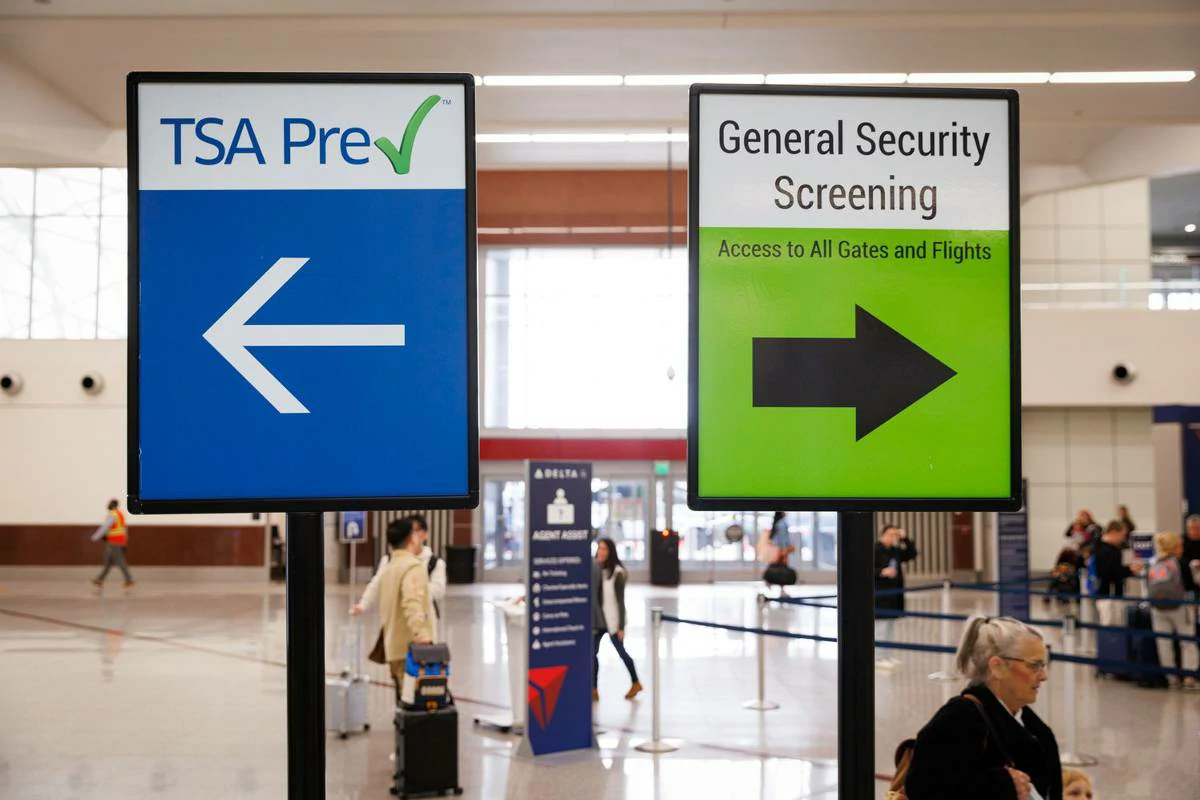
While both TSA PreCheck and Global Entry come with application fees, there are several ways to offset the cost and potentially obtain these programs for free. Here’s how:
1. Credit Cards That Offer TSA PreCheck or Global Entry Fee Credits
Many travel rewards credit cards offer statement credits to cover the application fee for either TSA PreCheck or Global Entry.
These cards typically come with annual fees, but the value of the credit often outweighs the cost, especially if you are a frequent traveler.
Some popular credit cards offering these benefits include
- Chase Sapphire Reserve®: This premium travel card provides a $300 annual travel credit, which can be used to cover the Global Entry or TSA PreCheck application fee.
- Capital One Venture X Rewards Credit Card: Cardholders receive up to $100 in statement credits for either Global Entry or TSA PreCheck every four years.
- American Express® Platinum Card®: This card offers a $100 credit for Global Entry every four years.
It’s crucial to compare different credit cards and their benefits to find the one that aligns with your spending habits and travel needs.
2. Loyalty Programs That Offer TSA PreCheck or Global Entry Fee Credits
Certain airline and hotel loyalty programs also offer ways to redeem points or miles for TSA PreCheck or Global Entry application fee credits.
- United Airlines MileagePlus: Members can redeem miles for a TSA PreCheck or Global Entry application fee credit.
- Marriott Bonvoy: Members can redeem points for a TSA PreCheck or Global Entry application fee credit.
- IHG One Rewards: Members can redeem points for a TSA PreCheck application fee credit.
The redemption rates and terms can vary, so check the specific details of your loyalty program for the most up-to-date information.
Tiffany Funk Expert Opinion
Travel Expert, Tiffany Funk, founder of One Mile at a Time, advises on maximizing these benefits: “If you’re a frequent traveler with a rewards credit card and/or loyalty program memberships, it’s definitely worth exploring the options to get TSA PreCheck or Global Entry for free. It’s a simple way to add significant value to your travel experience.”
Pros and Cons of TSA PreCheck and Global Entry
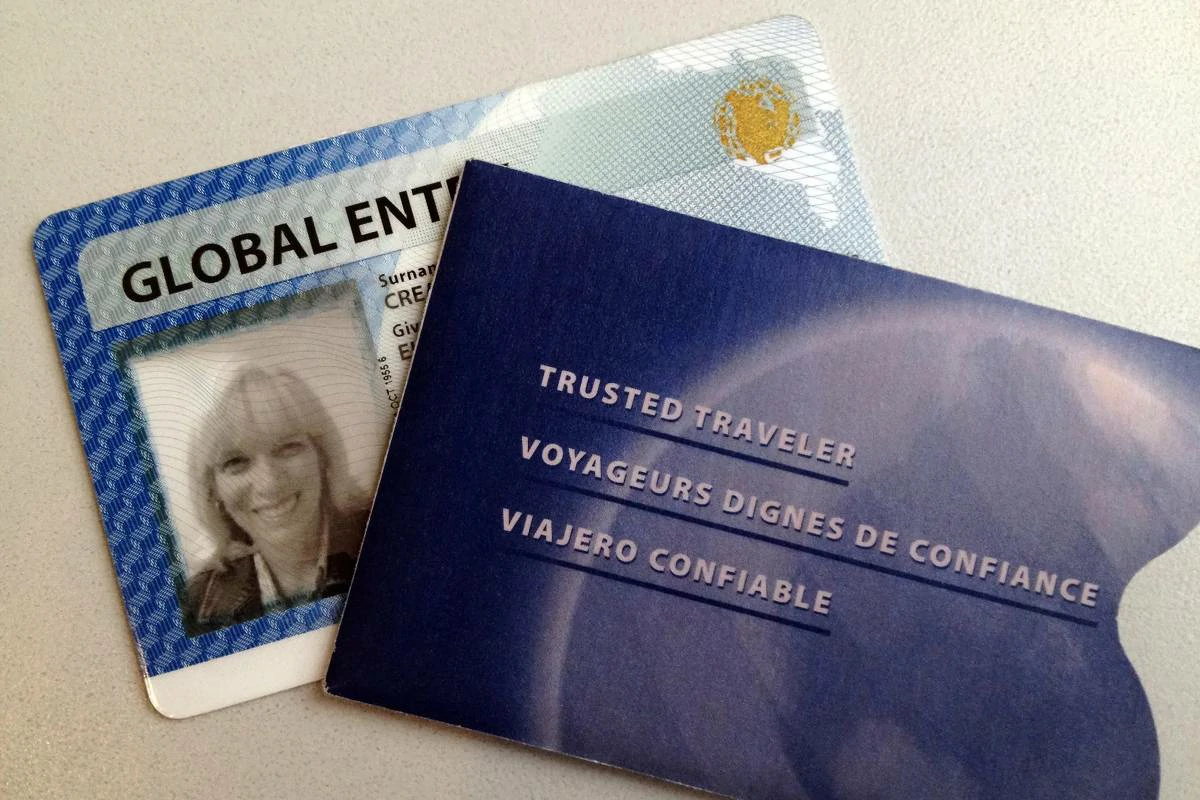
| Program | Pros | Cons |
|---|---|---|
| TSA PreCheck | – Expedited security screening at over 200 U.S. airports | – Limited to domestic travel within the U.S. |
| – Shorter lines and faster processing | – Does not include expedited customs clearance | |
| – Keep shoes, belts, and light jackets on | – Not available for all international flights | |
| – Laptops and liquids can remain in carry-on bags | – Requires separate application and fee | |
| Global Entry | – Includes all TSA PreCheck benefits | – More expensive than TSA PreCheck |
| – Expedited customs clearance at over 85 airports worldwide | – Requires in-person interview | |
| – No need to fill out customs declaration forms | – Longer application processing time | |
| – Mobile Passport Control app for even faster customs processing | – Not available for all nationalities | |
| – Potential for expedited entry at participating international airports through reciprocal agreements with other countries (e.g., Australia, Canada, Mexico) | – Limited benefits for NEXUS and SENTRI members (depends on specific crossing) |
Chris Guillebeau Expert Opinion
Travel Expert, Chris Guillebeau, New York Times bestselling author of “The $100 Startup” and frequent traveler, shares his thoughts on TSA PreCheck and Global Entry: “I’ve had both TSA PreCheck and Global Entry for years, and I wouldn’t travel without either of them. TSA PreCheck is a lifesaver for domestic travel, and Global Entry makes international trips so much less stressful. If you can afford it, I highly recommend getting both.”
Important Considerations

1. Renewal Processes for Both Programs
Both TSA PreCheck and Global Entry memberships are valid for five years. It’s essential to be aware of the renewal processes to ensure uninterrupted access to the programs’ benefits.
TSA PreCheck Renewal
- You can initiate the renewal process online up to six months before your membership expiration date.
- The renewal fee is $70 if completed online and $78 if done in person at an enrollment center.
- The renewal process typically takes less time than the initial application.
Global Entry Renewal:
- You are eligible to renew your membership one year before its expiration date.
- The renewal fee is the same as the application fee – $100.
- You can renew online, but an interview may be required.
Julia Menez Expert Opinion
Travel Expert, Julia Menez, travel writer and founder of The Travel Sisters, shares her experience with renewals: “I’ve found the renewal processes for both TSA PreCheck and Global Entry to be quite straightforward. I usually renew online a few months before my membership expires to avoid any disruptions in my travel plans.”
2. Children and Trusted Traveler Programs
Children under 18 can also benefit from TSA PreCheck and Global Entry, but there are specific considerations:
TSA PreCheck: Children 12 and under can accompany TSA PreCheck members in the expedited security lanes. They are not required to have their own membership.
Global Entry: Children of any age can apply for Global Entry, but they must have their own membership and complete the application process, including the interview.
3. Additional Trusted Traveler Programs (NEXUS, SENTRI)
Beyond TSA PreCheck and Global Entry, the U.S. Customs and Border Protection offers two other programs worth considering:
NEXUS: Expedited processing for travel between the U.S. and Canada. It includes TSA PreCheck and Global Entry benefits for air travel.
SENTRI: Expedited processing for travel between the U.S. and Mexico. It focuses on land border crossings but also includes TSA PreCheck benefits for air travel.
If you frequently travel to Canada or Mexico, these programs could be beneficial. However, they have additional eligibility requirements and may not be available at all border crossings.
Conclusion
Choosing between TSA PreCheck and Global Entry boils down to your individual travel habits and priorities. If you primarily travel domestically within the U.S., TSA PreCheck offers a cost-effective solution for expedited security screening.
However, if you’re a frequent international traveler, Global Entry’s comprehensive benefits, including expedited customs clearance and TSA PreCheck perks, make it a worthwhile investment.
Remember, both programs can enhance your travel experience by saving you time and reducing hassle at the airport. Carefully consider your needs, budget, and travel frequency before making your final decision.
For further information and to begin your application, visit the official websites:
By investing in a Trusted Traveler Program, you’re not just saving time; you’re investing in a more seamless and enjoyable travel experience.
FAQs
Is TSA PreCheck included in Global Entry?
Yes, TSA PreCheck is included in Global Entry. If you are approved for Global Entry, you automatically receive TSA PreCheck benefits, allowing you to use the expedited security screening lanes for domestic flights within the U.S.
How do I apply for Global Entry?
You can apply for Global Entry by creating an account on the Trusted Traveler Programs (TTP) website. The application process involves providing personal information, travel history, and paying a non-refundable fee. If conditionally approved, you’ll be required to schedule an in-person interview at an enrollment center.
Is TSA PreCheck worth it?
TSA PreCheck is worth it if you frequently travel domestically within the U.S. The expedited screening process can save you a significant amount of time, especially during peak travel seasons. Additionally, the convenience of not having to remove shoes, belts, or light jackets and being able to leave laptops and liquids in your carry-on can make travel much more enjoyable.
How can I get Global Entry for free?
Many travel rewards credit cards offer statement credits to cover the Global Entry application fee. Some popular options include the Chase Sapphire Reserve®, Capital One Venture X Rewards Credit Card, and American Express® Platinum Card®. Additionally, certain airline and hotel loyalty programs allow you to redeem points or miles for a Global Entry application fee credit.
How do I get TSA PreCheck for free?
Similar to Global Entry, several travel rewards credit cards offer statement credits for the TSA PreCheck application fee. Some examples include the Chase Sapphire Reserve®, Capital One Venture Rewards Credit Card, and Bank of America® Premium Rewards® credit card. Additionally, some airline loyalty programs, such as United Airlines MileagePlus, offer TSA PreCheck fee credits for their members.
Can I have both TSA PreCheck and Global Entry?
No, it’s unnecessary to have both programs. Global Entry includes all the benefits of TSA PreCheck, so having both would be redundant.
Can I use Global Entry for domestic flights?
Yes, Global Entry members can use TSA PreCheck lanes for domestic flights, as TSA PreCheck benefits are included in Global Entry.
What is the difference between Global Entry and NEXUS?
Global Entry focuses on expedited customs clearance for air travelers entering the U.S., while NEXUS is designed for expedited travel between the U.S. and Canada through air, land, and sea ports of entry.
How long does it take to get approved for Global Entry?
The Global Entry application process typically takes several months, depending on the volume of applications and interview availability. However, you can expedite the process by utilizing the Enrollment on Arrival option at select airports.
Can I transfer my Global Entry membership to someone else?
No, Global Entry memberships are non-transferable. Each individual traveler must have their own membership.
